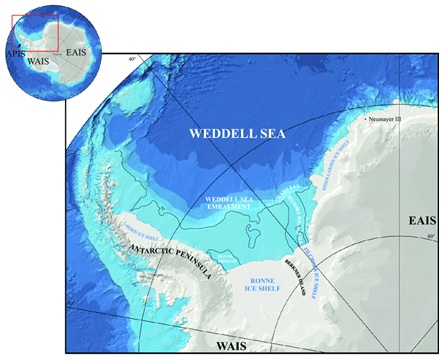

Context
An expedition team locates wreckage of explorer’s ship which sank in Weddell Sea in 1915.
Background
Background Story:
- The Endurance had set sail from Plymouth, England, in August 1914, just as Europe was entering the maelstrom of World War I.
- The Imperial Trans-Antarctic Expedition was to be led by Shackleton and would be the first attempt to cross the Antarctic continent by foot.
- However, shortly after leaving South Georgia at the end of 1914, the Endurance was caught in pack ice.
- The ship sank in 1915, about 3,008 meters deep in the Weddell Sea.
- After months spent in makeshift camps on the ice floes drifting northwards, Shackleton and his 27 crew members boarded lifeboats to reach the uninhabited Elephant Island.
- Shackleton and five others then made an 800-mile open-boat journey to reach South Georgia.
- Despite being stranded with little food and shelter, all survived.
About the expedition:
- Previous attempts to locate the 144-foot-long wooden wreck, whose location was logged by its captain Frank Worsley, had failed due to the hostile conditions of the ice-covered Weddell Sea under which it lies.
- Recently, an international team of marine archaeologists and scientists located the wreck 3,000 meters under the Weddell Sea.
- The Endurance22 mission, organised by the Falklands Maritime Heritage Trust and using advanced underwater vehicles called Sabertooths fitted with high-definition cameras and scanners, tracked the vessel’s remains down.
- The expedition led by British polar explorer John Shears, operated from the South African ice-breaking ship Agulhas II and also researching the impact of climate change found the “Endurance” four miles (six km) from the position recorded by Worsley.
Protection under 1959 Antarctic Treaty:
- The wreck is protected as a historic site and monument under the 1959 Antarctic Treaty.
- As per the guidelines of the Antarctic Treaty which was signed by 12 countries in 1959 and is the closest thing to a constitution for the southernmost continent, Endurance will not be moved or taken apart.
- Instead, she will remain where she is and be studied, mapped and photographed there.
|
About Antarctic Treaty:
|
About Weddell Sea:
- The Weddell Sea is part of the Southern Ocean and is enclosed between the Antarctic Peninsula on the west, Cape Norvegia on the east and Filchner and Ronne ice shelves to the south.
- The Weddell Sea is named in honor of Scottish sailor James Weddell who, in 1823 discovered the vast body of water.
- Today, Argentina, Britain and Chile have territorial claims over parts of Weddell Sea. The heavily iced waters of Weddell Sea have temperatures ranging from -0.63°C to -1.8°C with depths greater than 6000m.
- Six research stations from Argentina (Belgrano II), United Kingdom (Halley), Sweden (Wasa), Finland (Aboa), South Africa (SANAE IV) and Germany (Neumayer) have been established along Weddell Sea.
- Scientists have regarded the clarity of Weddell Sea to be comparable to that of distilled water.



